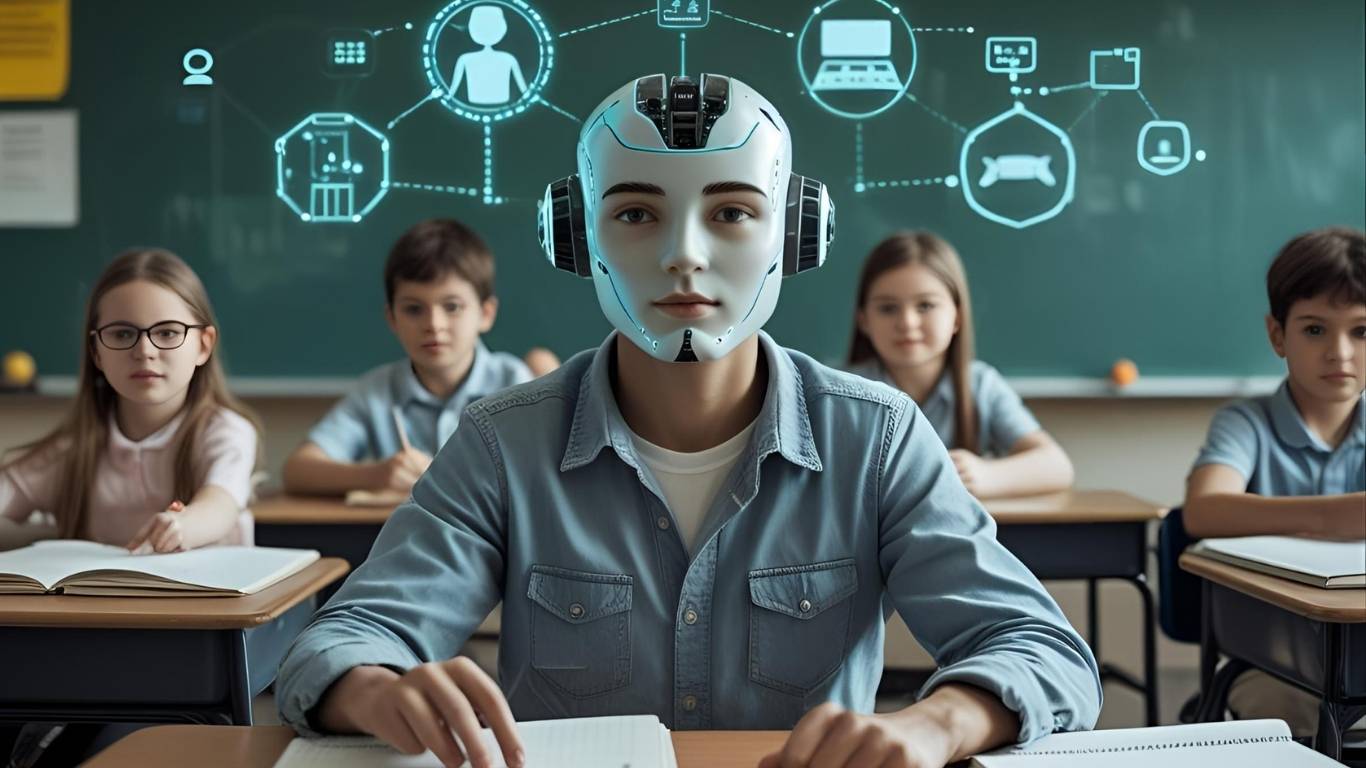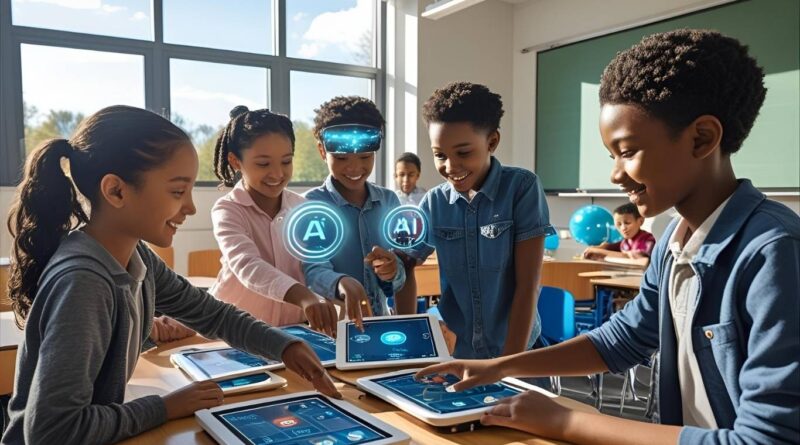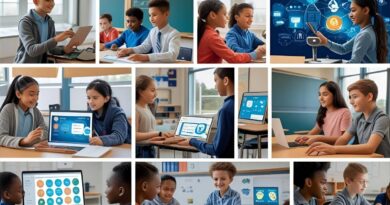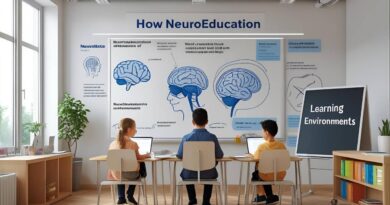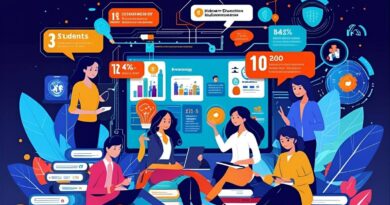AI in Classrooms: Revolution or Risk
Introduction
Imagine a classroom where a teacher never tires, lessons adapt instantly to each student’s needs, and feedback is instant. Sounds like science fiction? Not anymore. Artificial Intelligence (AI) is no longer just the realm of Silicon Valley—it’s walking through the doors of classrooms across the globe.
But here’s the catch: while some hail AI as a revolution in education, others warn it’s a risky road. So, are we building the future or courting disaster?
Let’s dive deep into this dynamic debate.
Understanding AI in Education
What is Artificial Intelligence in the Classroom?
AI in education refers to the use of machine learning algorithms, natural language processing, and data analytics tools to assist in teaching and learning. From personalized tutoring to predictive analytics on student performance, AI is shaping how we think about education delivery.
How AI Tools Are Integrated in Schools
From chatbots helping with homework to AI-driven platforms like Squirrel AI or Century Tech adapting lessons based on student performance—AI is being embedded into:
- Learning Management Systems (LMS)
- Assessment tools
- Smart assistants (like Alexa-enabled learning pods)
- Virtual reality for simulations
The Promises of AI in Education
Personalized Learning Paths
One-size-fits-all education? That’s old school.
Adapting to Student Learning Styles
AI can detect whether you’re a visual learner, a reader, or someone who learns best by doing—and then serve up content just for you. It’s like having a private tutor for every student.
Automated Grading and Feedback
Why wait days for feedback? AI tools like Gradescope can scan essays, quizzes, and even coding assignments in seconds—freeing up time for teachers to focus on actual teaching.
Language Translation for Multilingual Classrooms
AI-powered translation tools break down language barriers. Real-time translation helps ESL students understand lessons in their native tongue.
AI Tutors and 24/7 Learning Support
No more being stuck on a problem at 9 p.m. AI tutors are available round the clock, helping reinforce lessons outside school hours.
How AI Enhances the Teaching Experience
Reducing Administrative Burdens
Teachers spend hours grading, filing, and organizing. AI automates tasks like:
- Attendance tracking
- Grading quizzes
- Scheduling
Enhancing Lesson Planning with AI Insights
Based on student data, AI can suggest what topics need more attention or what learning activities work best for each student group.
Classroom Management with Smart Assistants
AI-based classroom tools help monitor student behavior, flag distractions, and even remind students of deadlines.
The Risks and Concerns of AI in Classrooms
Data Privacy and Student Surveillance
AI needs data to function—and lots of it. But collecting sensitive student data raises red flags. Who owns the data? Who protects it?
Equity and Access Issues
Not every school can afford AI tools. In low-income areas, students may be left behind, widening the digital divide.
Dehumanizing the Learning Experience
AI can’t replace a teacher’s empathy, encouragement, or the spontaneous laughter that happens in a real classroom.
Dependency on Technology
What if systems fail? Or students stop learning to think critically because AI does the thinking for them?
Ethical and Social Considerations
AI Bias in Educational Algorithms
If an AI system is trained on biased data, it may misjudge or stereotype certain groups of students, leading to unfair outcomes.
Teacher-Student Relationship Challenges
Over-reliance on AI might reduce meaningful human interactions between teachers and students—something that’s essential for emotional development.
Regulation and Oversight Needs
There’s little global consensus on how AI in schools should be regulated. Without clear policies, misuse or abuse becomes easier.
Real-World Examples of AI in Classrooms
Success Stories from Developed Nations
In South Korea and Finland, AI platforms are helping students leapfrog traditional educational bottlenecks. Smartboards, AI mentors, and digital simulations are mainstream.
Developing Countries and AI Challenges
In contrast, countries like Nepal or parts of Africa face tech infrastructure limitations. But organizations like UNESCO are pushing for inclusive AI solutions.
The Role of Educators in an AI-Powered World
Upskilling Teachers for AI Integration
Teachers need training—not just to use AI tools, but to understand their strengths and limits. Professional development must evolve.
Maintaining Human Touch in Tech-Heavy Classrooms
AI can be an amazing assistant—but not a replacement. The magic of teaching still lies in human connection.
The Future of AI in Education
Hybrid Classrooms and Intelligent Systems
Picture this: classrooms where AI handles personalization, while teachers bring creativity and mentorship. The best of both worlds.
Predictions for the Next Decade
By 2035, expect:
- Voice assistants in every class
- AI career advisors
- Emotion-detecting software to support student wellness
Conclusion
So, is AI in classrooms a revolution or a risk?
Honestly—it’s both.
Handled wisely, AI can be a game-changer, bringing personalized, efficient, and engaging learning to all. But without ethics, equity, and education reform, it could deepen existing cracks.
Let’s embrace AI as a tool—not a takeover. The goal? Smarter classrooms with smarter human hearts at the center.
FAQs
1. What are the main benefits of AI in classrooms?
AI offers personalized learning, faster grading, language support, and real-time feedback, enhancing both student and teacher experiences.
2. Is AI a threat to teachers’ jobs?
Not really. AI complements teaching rather than replacing it. Teachers still provide critical emotional, social, and cognitive support.
3. How can AI be used responsibly in schools?
By ensuring data privacy, promoting access equity, reducing bias, and maintaining human oversight, AI can be used ethically and effectively.
4. What are the best AI tools for classrooms today?
Tools like ChatGPT, Gradescope, Quizlet AI, and Duolingo are popular for personalized learning and efficient assessment.
5. How can schools protect student data when using AI?
Implement strong cybersecurity, follow data protection laws, and choose trusted AI vendors with transparent policies.
